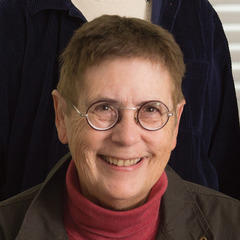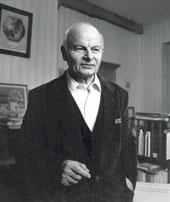Marshall McLuhan Quotes - Page 13
Marshall McLuhan (1964). “Understanding media: the extensions of man”
We have to find the environments in which it will be possible to live with our new inventions.
Marshall McLuhan, Quentin Fiore, Jerome Agel (1996). “The medium is the massage: an inventory of effects”, Hardwired
Marshall McLuhan (1969). “Counter blast [by] Marshall McLuhan”
"Laws of Media: The New Science". p. 225. Book by Marshall McLuhan and Eric McLuhan, 1988.
Obsolescence never meant the end of anything, it's just the beginning.
Marshall McLuhan (2010). “The Medium and the Light: Reflections on Religion and Media”, p.139, Wipf and Stock Publishers
New media are new archetypes, at first disguised as degradations of older media.
Arts in society, Volume 3, (p. 240), 1964.
Marshall McLuhan (1969). “Counter blast [by] Marshall McLuhan”
"Laws of Media: The New Science". Book by Marshall McLuhan, co-written with Eric McLuhan, p.217, 1988.
The method of our time is to use not a single but multiple models for exploration.
Marshall McLuhan, Quentin Fiore, Jerome Agel (1996). “The medium is the massage: an inventory of effects”, Hardwired
"Laws of Media: The New Science". Book by Marshall McLuhan, co-written with Eric McLuhan, p.74, 1988.
"Laws of Media: The New Science". Book by Marshall McLuhan, co-written with Eric McLuhan, p. 40, 1988.
"Laws of Media: The New Science". Book by Marshall McLuhan, co-written with Eric McLuhan, p. 52, 1988.
Metaphor has traditionally been regarded as the matrix and pattern of the figures of speech.
"Laws of Media: The New Science". p. 231. Book by Marshall McLuhan and Eric McLuhan, 1988.
Technologies themselves, regardless of content, produce a hemispheric bias in the users.
"Laws of Media: The New Science". Book by Marshall McLuhan, co-written with Eric McLuhan, p.71, 1988.
Marshall McLuhan (1964). “Understanding media: the extensions of man”
Mademoiselle: The Magazine For Smart Young Women, Volume 64 (p. 114), 1966.
Marshall McLuhan, Michel Moos (2014). “Media Research: Technology, Art and Communication”, p.124, Routledge







